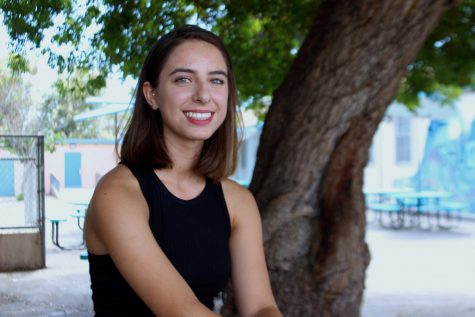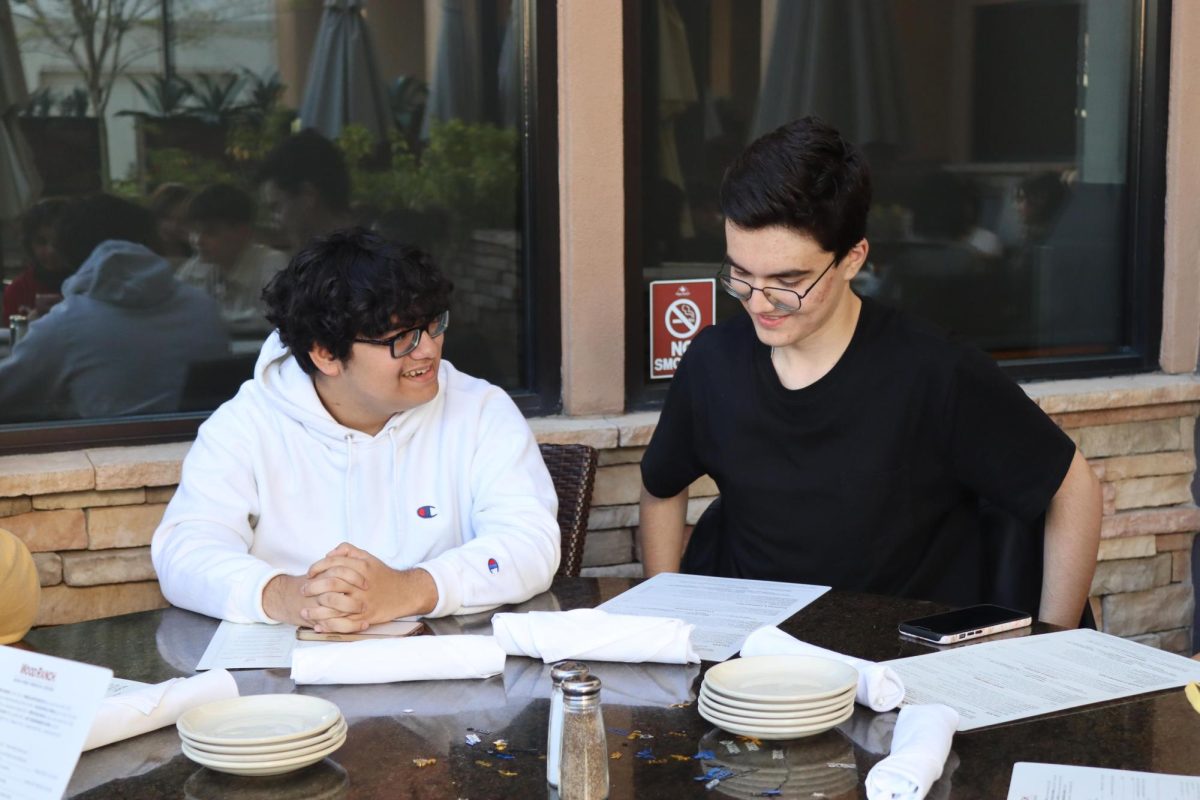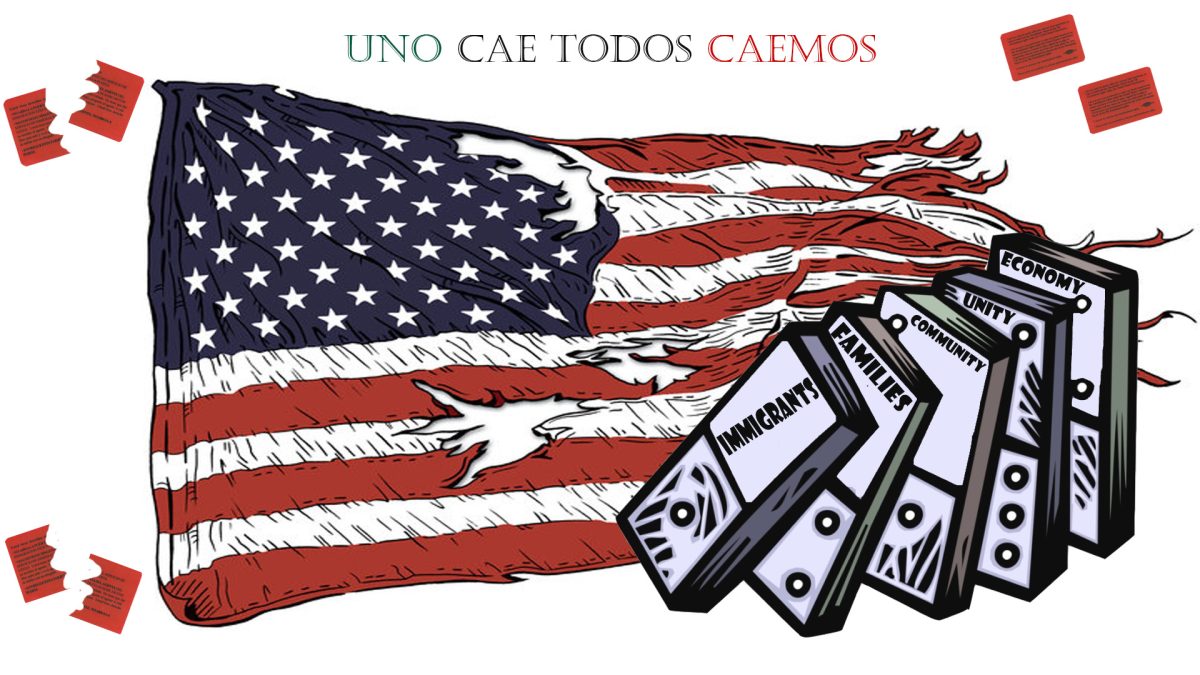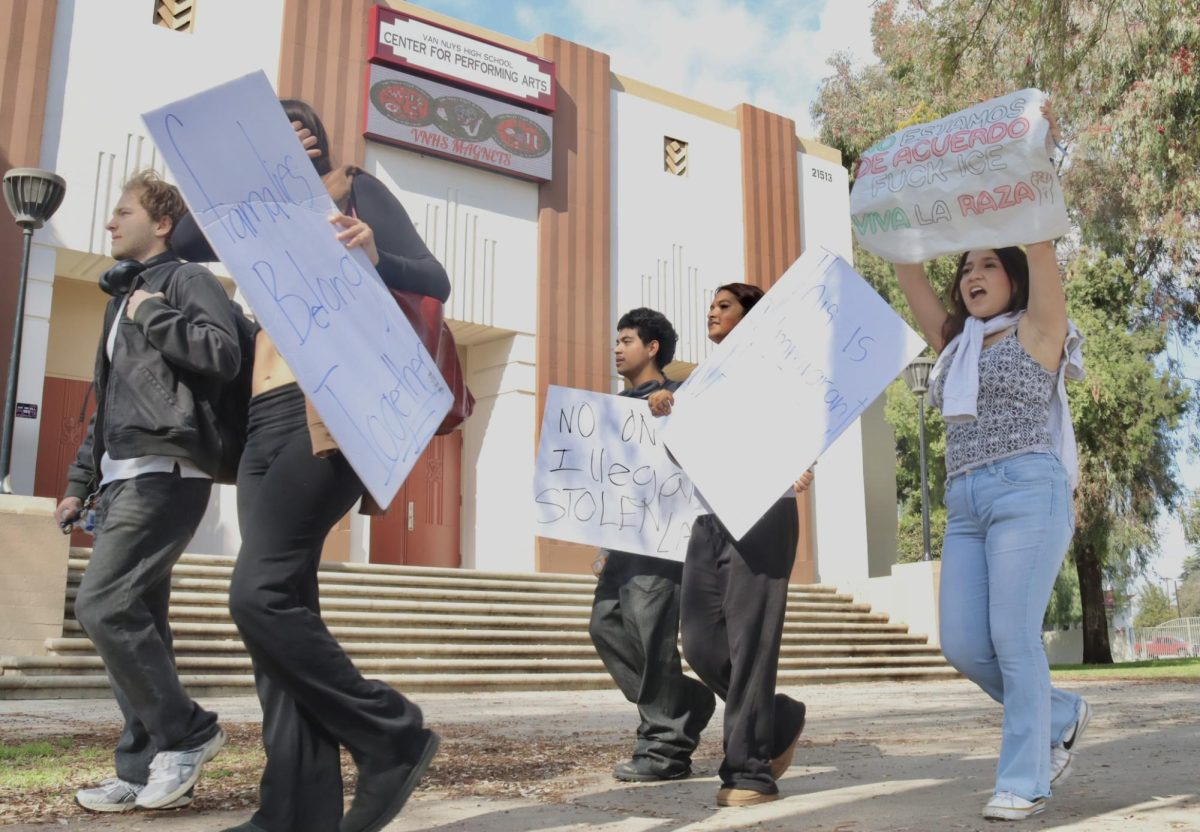Museum exhibit remembers 1992 Los Angeles riots on its 25th anniversary
April 24, 2017
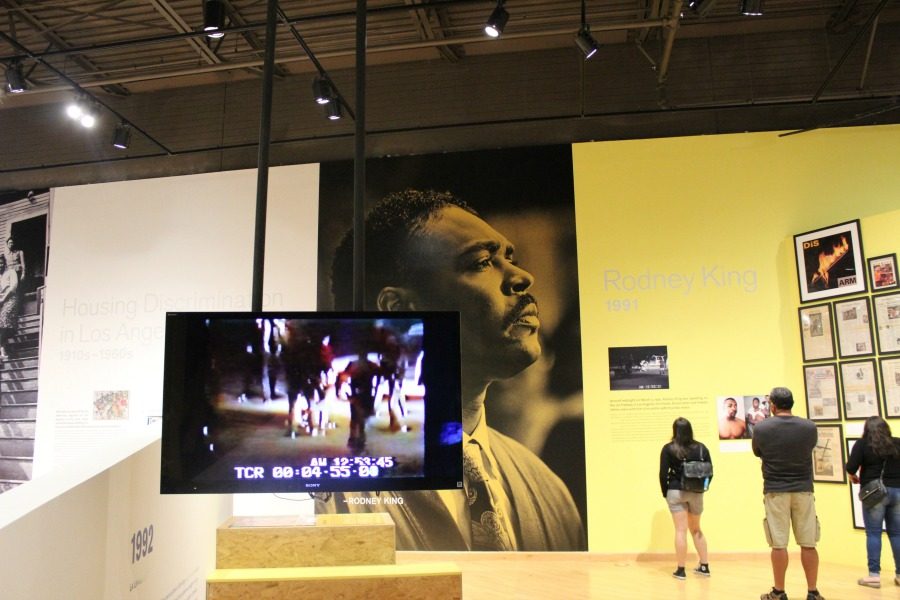
Real footage of the violence during the LA Riots gives visitors a look into the grim event.
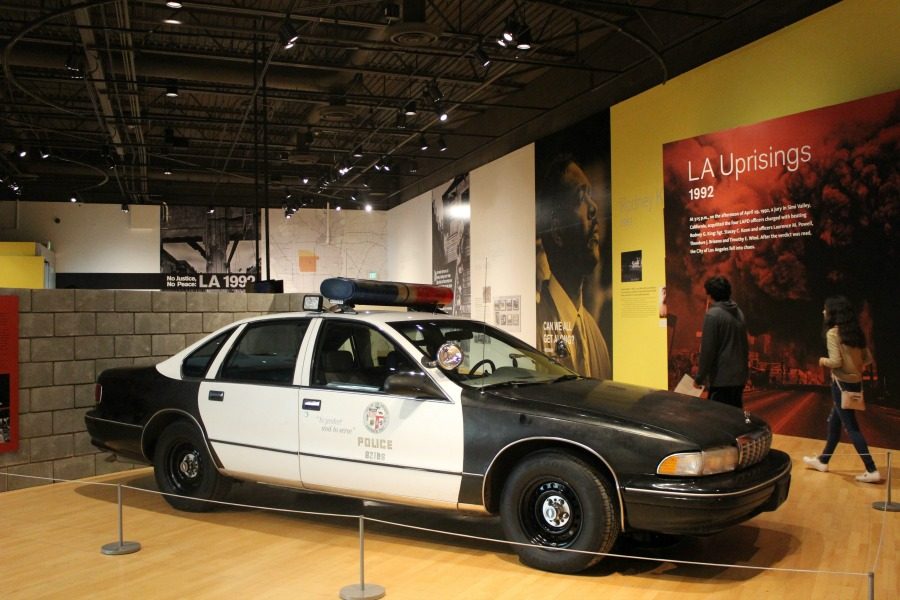
The California African American Museum used the display of an LAPD car in front of a brick wall to demonstrate what the environment was like during the me of the riots.
As you enter the new exhibition “No Justice, No Peace: LA 1992,” at the California African American Museum (CAAM), you are taken through an eye-opening experience into the world of hardships that African Americans had to endure in the 1900s.
Tyree Boyd-Pates curated this exhibit in order to recognize the 25th Anniversary of the LA Riots. The exhibit imitates a timeline which exposes the discrimination and repression that African Americans faced throughout the twentieth century, until the tension exploded into the LA Riot of 1992.
“The Riot did not just happen because Rodney King got beat up and the cops got acquitted; it was a long history of the LAPD doing a lot of crazy things and getting away with it,” Adrianne Ramsey, Gallery Guide at CAAM said .
The exhibit begins in 1910 with the Great Migration. As you continue walking, you pass through other events in the late 1900’s including the Zoot Suit Riot in 1943, the death of Latasha Harlins in 1991 and the death of Rodney King in 1992. Towards the end of the long room, you reach the tempestuous LA Uprising of 1992.
The exhibit displays newspaper clippings, documentaries and real footage of the violent events. Through the interactives, visitors are able to experience the rage and intensity of the riots first-hand. Quotes from eminent leaders and important documents throughout this time period cover the colorful walls, including a quote from Rodney King asking, “Can we all get along?”
“It was time of anger and frustration and rage and I think it’s good to find out where that range came from and how to handle it,” Ramsey said. “I hope that’s what people take from it.”
The question, “In the midst of today’s political climate, how can we bring change to unify ourselves?” is boldly painted on the gray wall at the end of the room. Viewers are able to fill out a red, green, or white tag with an answer and hang the bright tags onto the bland wall. Over 100 tags have already been placed with a variety of answers including “embrace our diversity” or even “Impeach Trump.”
By including this wall, CAAM is creating a connection from the past to the present. As you enter this exhibit, it is inevitable to discover a correlation between events that transpired in the late 1900s and events that are occurring today.
“There is still issues with white police officers killing innocent black men and getting away with it,” Ramsey said. “But people today are rising up and speaking out about what they think is wrong.”


